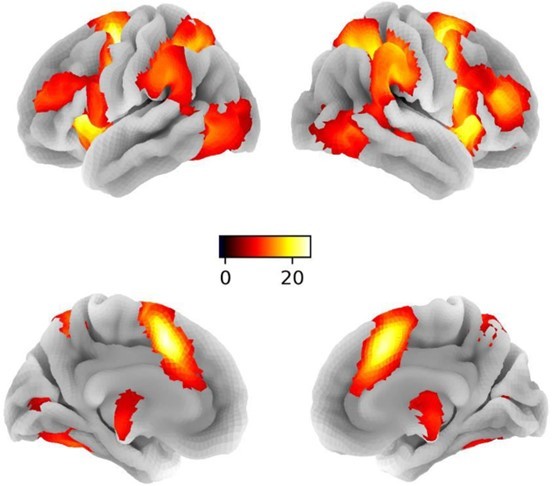fMRI-Based Modelling Gives Insight Into How Our Minds Control Impulses
Images

A team of researchers from The University of Hong Kong and The University of Electronic Science and Technology of China has conclusively identified the right inferior frontal gyrus (rIFG) as a key input and causal regulator within the subcortical response inhibition nodes. This right-lateralized inhibitory control circuit, characterized by its significant intrinsic connectivity, highlights the crucial role of the rIFG in orchestrating top-down cortical-subcortical control, underscoring the intricate dynamics of brain function in response inhibition.
In this study, researchers employed dynamic causal modeling (DCM-PEB) and functional magnetic resonance imaging (fMRI) with a substantial sample size (n = 250) to explore inhibitory circuits in the brain, particularly focusing on the right inferior frontal gyrus (rIFG), caudate nucleus (rCau), globus pallidum (rGP), and thalamus (rThal). This approach treated the brain as a nonlinear dynamical system, enabling the estimation of directed causal influences among these nodes, influenced by task demands and biological variables. Findings revealed a high intrinsic connectivity within this neural circuit, with response inhibition notably enhancing causal projections from the rIFG to both rCau and rThal, particularly amplifying the regulatory role of the rIFG during such tasks. The study also uncovered that sex and performance metrics significantly affect the circuit's functional architecture; for instance, women exhibited increased self-inhibition in the rThal and reduced modulation to the GP, while better inhibitory performance was linked to more robust communication from the rThal to the rIFG. Interestingly, these communication patterns were not mirrored in a left-lateralized model, highlighting a hemispheric asymmetry. The research indicates that different brain processes might mediate similar behavioral performances in response inhibition across genders, particularly in thalamic loops, with higher response inhibition accuracy associated with stronger information flow from the rThal to the rIFG.
These insights into the brain's inhibitory control mechanisms have significant implications for understanding a range of mental and neurological disorders characterized by response inhibition deficits. The study's findings could guide the development of targeted neuromodulation strategies and personalized interventions to address these deficits, enhancing the treatment and management of such conditions.